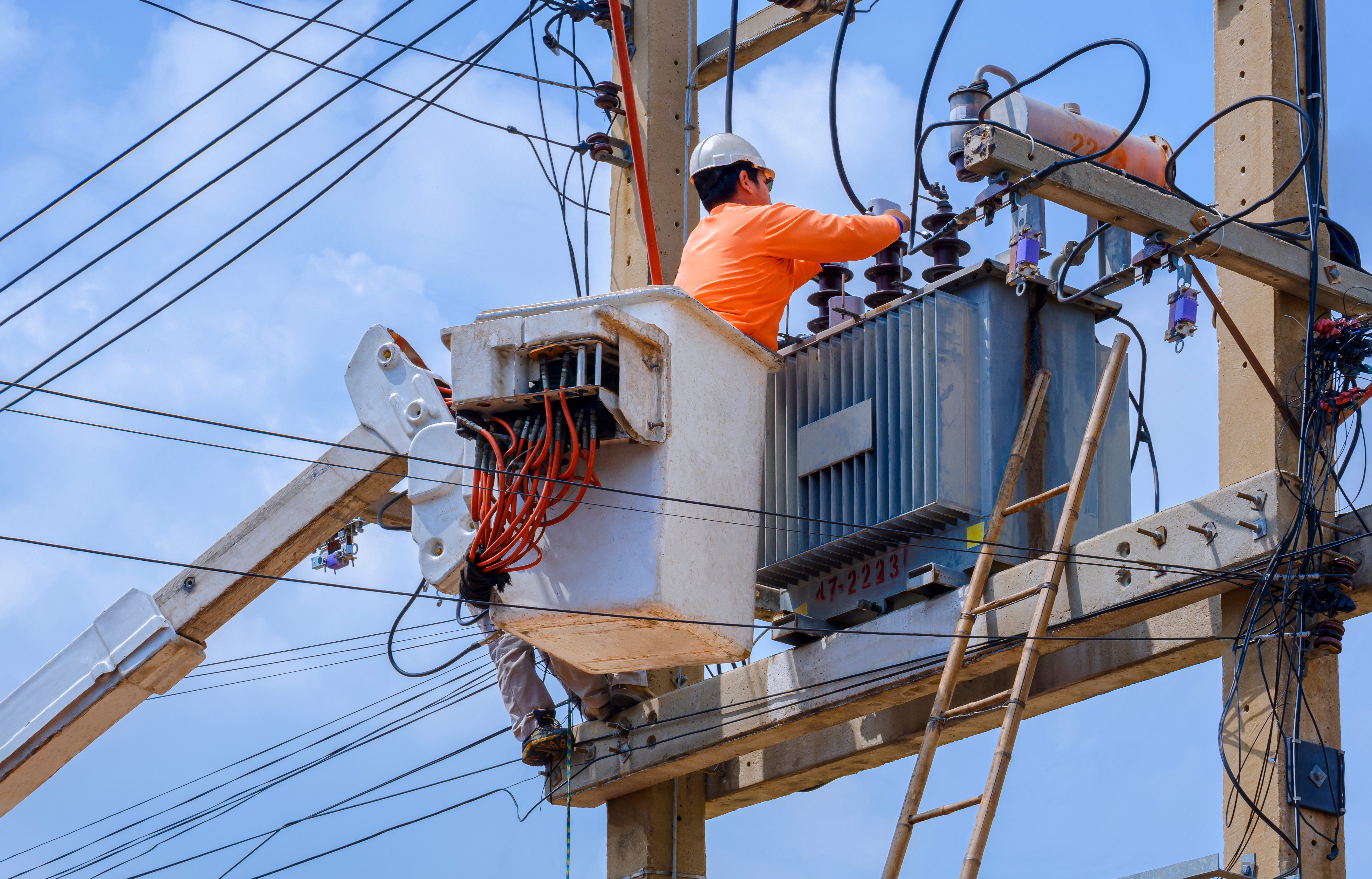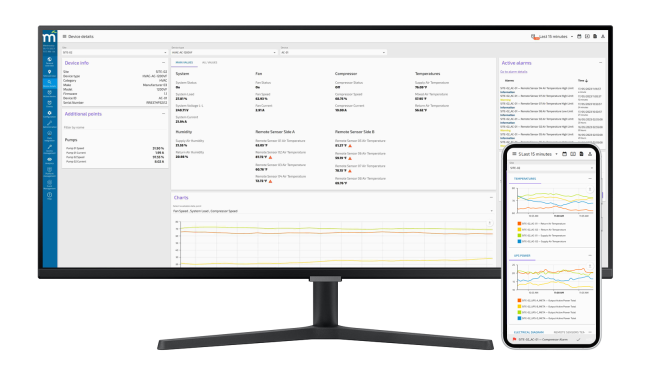Resources > Blog Post > Radix IoT In Action: How to Cut Down on Truck Rolls
Radix IoT In Action: How to Cut Down on Truck Rolls

Read about the hidden costs of truck rolls + 3 real-world scenarios on how Radix IoT is changing the game.
For many companies, truck rolls are a necessary evil. While they are essential to addressing problems and performing maintenance, truck rolls are also notoriously costly and inefficient. The cost of a truck roll can vary significantly, but our estimates show it can range from $1,500 to $2,000 a visit. And this doesn’t include the amount of time it can take to resolve issues. When you consider that some companies perform thousands of truck rolls annually, the costs and time can add up quickly, significantly impacting the bottom line, productivity, and overall uptime.
The Hidden Costs of Truck Rolls
When most people think about the cost of truck rolls, labor and vehicle costs are top of mind—and for good reason. Technicians and service personnel are among the highest expenses for many companies. Vehicle costs are significant as well. Fuel costs alone can add $20 to $50 per trip. But the true costs of truck rolls go much deeper than that:
Operational Downtime: Each truck roll creates significant downtime, which can impact the overall efficiency of operations and delay other scheduled tasks.
Customer Satisfaction: Frequent or prolonged outages due to delays in resolving issues can lead to decreased customer satisfaction and trust.
Compliance and Safety: Delays in resolving issues could threaten a company’s compliance with contracts or safety regulations, potentially incurring penalties or worse.
Opportunity Costs: The opportunity cost of diverting resources from proactive maintenance or infrastructure upgrades to reactive truck rolls can be substantial.
The impact of truck rolls can be mitigated through the adoption of advanced technologies such as the Radix IoT platform, Mango, which enables remote diagnostics and predictive maintenance. Let's dive into some real-world scenarios to understand how Radix IoT is changing the game.
Scenario 1: Telecom – The Power Outage Predicament
Without Radix IoT: A telecom company operates a cell tower that provides crucial network coverage for a densely populated area. One night, the cell tower loses power and stops transmitting signals, leading to service disruption for thousands of users. The telecom company dispatches a technician in the middle of the night, incurring overtime and travel costs. The technician arrives at the site and learns that the power outage was due to a malfunctioning battery in the backup generator, which led to it not starting when the local grid failed. If the technician has the necessary parts and tools, they make the repair and restore service. If not, they need to return to the site, adding to the costs and downtime.
With Radix IoT: If this telecom company had Radix IoT, it could have avoided the entire service outage and truck roll(s) through:
Real-time monitoring of the generator and its battery, including voltage levels and operational status.
Automated alerts about the battery’s deteriorating condition, allowing them to address the issue proactively.
If the battery failed due to unpredictable reasons, Radix IoT could have still helped by:
Sending an automated alert about the generator’s status, triggering the company to investigate further.
Providing a comprehensive view of all parameters at the tower—including temperature, humidity, power status, generator status, and even if a door was open—through an intuitive dashboard.
Delivering the insight the company needs to identify the problem remotely and ensure the technician is prepared to make the repair on the first trip.
Radix IoT platform provides operations teams the insights they need to identify problems remotely, and more importantly, ensure technicians are prepared to make repairs on the first trip!

Scenario 2: Energy – A Solar Field Fire
Without Radix IoT: An energy company operates a solar field comprising hundreds of solar panels and inverters spread across a vast area. One day, a neighbor reports smoke coming from the solar field. Upon receiving the call, the energy company immediately contacts emergency services and dispatches a truck to the solar field. The technician must travel to the site, often through challenging terrain, which can take considerable time if the location is remote. It takes emergency crews more than 30 minutes to get to the site, during which time the fire spreads, causing significant destruction. They later determine the fire was caused by a failing inverter in one section of the solar field.
With Radix IoT: Radix IoT could have detected anomalies in the inverter before it caught on fire through:
Real-time monitoring of the operational parameters and environmental conditions of the solar panels and inverters.
Analyzing historical data and performance trends and prompting the energy company to perform preventive maintenance and address potential issues before they become emergencies.
If the fire couldn’t be prevented, Radix IoT could minimize the impact by:
Triggering automated systems to shut down affected sections of the solar field remotely and contain the damage.
Performing remote diagnostics to understand the exact nature of the issue, allowing the company to coordinate an appropriate response more efficiently.
Scenario 3: Utilities – Unnecessary Maintenance
Without Radix IoT: A utility company in a rural area performs routine inspections and services on multiple transformers every six months. It sends a truck with a team of technicians to sites that are often more than an hour away. Sometimes, the technicians arrive to a transformer that’s working perfectly without any need for maintenance—incurring unnecessary labor and vehicle costs.
With Radix IoT: Radix IoT’s predictive analytics could have monitored the condition of transformers in real-time, empowering the utilities company to:
Know when a component is likely to fail or require servicing based on usage patterns and historical operational conditions to avoid costly last minute service calls and truck rolls.
Perform maintenance proactively based on actual usage and diagnostic data, instead of relying on a fixed schedule.
Ensures maintenance is performed only when necessary, reducing unnecessary truck rolls.
The Future of Efficiency with Radix IoT
If your organization is grappling with the high costs of truck rolls and slow issue resolution, consider exploring how Radix IoT can help. Embracing this technology not only helps in cutting operational costs but also helps you fix your issues faster, improves service reliability and uptime. For a smarter, more cost-effective approach to managing your infrastructure, Radix IoT is the way forward.
Ready to Learn More?
Leveraged by telecom, energy, datacenters and facilities’ operations worldwide – the Radix IoT platform seamlessly unifies data across pre-existing assets and systems. As a result, our customers get the real-time data insights needed to more effectively manage their operations and better protect their bottom line. We invite you to learn more – request a demo today!


